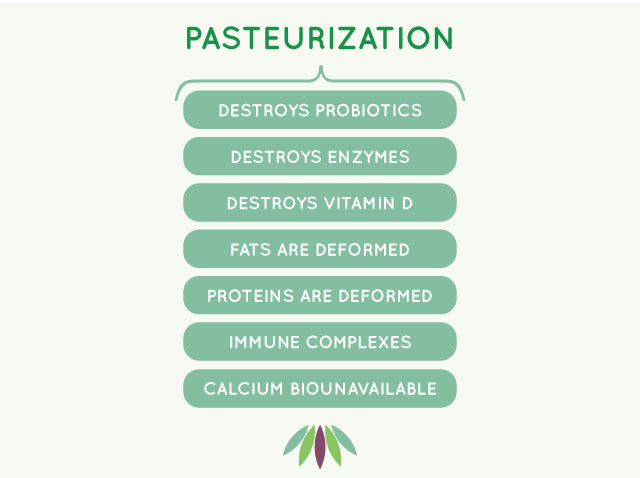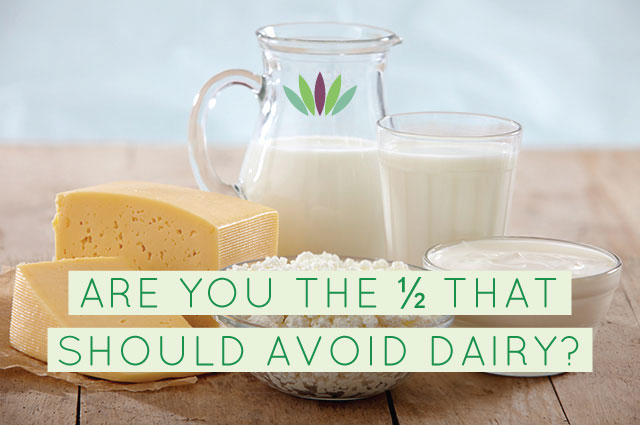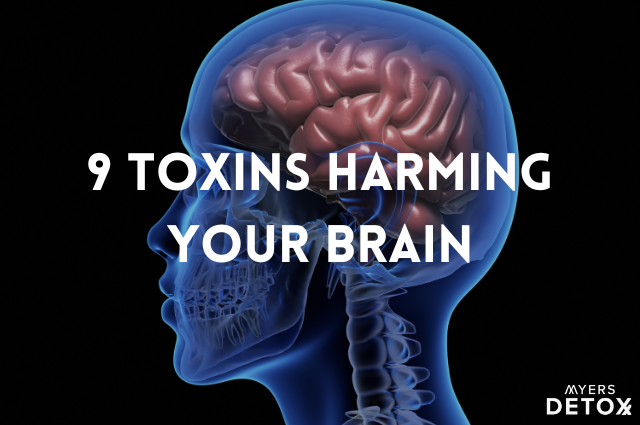Fifty percent of the population has a food sensitivity to dairy. The other half have adapted and can enjoy it freely, though some forms of dairy can still be problematic for this population. Learn about the different forms of dairy and which you may be able to tolerate.
Many Paleo diet plans recommend avoiding dairy simply because we never ate diary until animals were domesticated and milked very recently in history, roughly 10,000 years ago. True. Humans lived for millions of years without dairy. However, this is not a good enough reason to avoid it. Just because they lived without dairy doesn’t mean you must do the same. The Modern Paleo Diet says go for it if you’re one of the lucky that has adapted.
Dairy poses problems for a lot of people for many different reasons. Many people are lactose intolerant, meaning they don’t possess the enzyme to digest milk sugars called lactose. Others have a casein – dairy protein – allergy. Others can’t handle whey. Some people simply cannot tolerate pasteurized milk. The key is figuring out which elements you may have a problem with so you can learn which types of dairy you can enjoy. Let’s start with reviewing the different categories of dairy: Conventional, organic, grass fed and raw. Raw dairy is in a class by itself!
Conventional Dairy Contains Cow Crack
Most people are guzzling conventional, nonorganic dairy and it’s making them sick. Eighty-five percent of nonorganic milk sold in the US contains rGBH, AKA cow crack, which is a genetically modified synthetic growth hormone made by Monsanto, used to increase a cow’s milk production. These poor cows are on crack!! These hormones double their milk production. When you eat conventional dairy, these hormones wreak havoc on your hormones, too. rGBH is shown to increase inflammation markers in humans.
You may not have a problem with dairy – just a problem with the hormones, antibiotics, pesticides, GMO feed, pasteurization, and homogenization characteristic of conventional dairy. Forget the proteins in milk, the GMO’s alone can cause allergic reactions. This milk clearly contains toxins and is going to be far less nutrient dense compared to milk from a cow that is allowed to eat grass and produce milk at a normal rate. Just buy organic, grass fed milk already!
Organic
Organic milk is one step up from conventional, but still has its problems. The cows are usually fed grains, unless specified on the label, leaving the milk with too much omega-6, contributing to inflammation. The grains may not be GMO, but the cows are not eating a natural diet and the milk has less nutrition as a result. All organic milk is also pasteurized, which we’ll get into in a minute.
Not all organic dairy is created equal. I would avoid Horizon brand milk, which I do not consider organic. Their ‘farms’ have up to 20,000 cows and are run very much like factory farms. Additionally, the omega-3 in the milk is not from healthy fats naturally found in the milk but is from a synthetic, laboratory-produced version of DHA derived from microalgae species. This synthetic DHA oil is not on the organic standards list of acceptable ingredients. It is synthetic. Created in a lab by a big Biotech firm, it is added to milk and all infant formulas that claim ‘Rich in omega-3’ or ‘Plus DHA’ on the label. This omega-3 oil has never been tested for safety and can cause adverse reactions in infants, including excessive gas, diarrhea, and vomiting. (5) Just get your omega-3 from grass fed milk!
Grass Fed
If you’re going to eat dairy I can only recommend eating dairy from cows that ate grass. Eating grass fed dairy underscores the whole point of going Paleo – eating whole nutrient dense foods from animals eating their natural diet. The milk is going to have more omega-3 and less inflammatory properties than conventional milk from cows fed grains. Eating grass will confer the most nutrition to their meat and milk.
Raw Dairy
Raw dairy is in a class by itself. Raw dairy is a whole food, while pasteurized dairy is a processed food. These are completely different foods with greatly differing nutrient profiles. They cannot be thrown under the same dairy umbrella.
When I eat dairy, I eat raw, unpasteurized organic diary. I’ll admit when I first tried it, I was a bit freaked out by the potential for bacteria in raw milk, but I’ve never had a problem with it. The only catch is it goes bad in about a week. It’s fresh! No preservatives! This is the price of fresh food. Frankly, the pasteurized milk that lasts for a month or more in the fridge freaks me out.
Salmonella, E. coli and many other bacteria cannot survive in raw milk; beneficial bacteria, enzymes, and immune complexes naturally present in raw milk destroy bad bacteria. If these pathogenic microbes get into pasteurized milk, however, they thrive because the enzymes and beneficial bacteria have been destroyed by pasteurization. If you can’t bear the thought of bacteria in your milk, you can kill it with a few drops of 35% food grade hydrogen peroxide, but this will kill the probiotics as well.
The statistics aren’t too worrisome either. About 1 in 90,000 people are hospitalized by drinking contaminated raw dairy, while 1 in 880,000 people are hospitalized by contaminated pasteurized dairy. So, you have about a nine times increased chance of being sickened by raw milk. This is a risk some aren’t willing to take, but I am happy to ‘risk’ it given raw milk’s far superior nutritional gifts.
Why drink raw milk? People are drinking raw milk because pasteurization and homogenization destroys so many nutrients in milk. Proteins and fats in the milk are deformed, making them very unhealthy and difficult to digest.
Pasteurization – milk is heated to high temperatures to kill bacteria.
Raw dairy, especially raw butter, contains essential fat-soluble vitamins A, D, E, and K, most of which are destroyed during pasteurization. These fat-soluble vitamins are necessary to absorb vitamins and minerals. Because vitamin D is destroyed during pasteurization, synthetic vitamin D2 is ironically added back to the milk! That’s why it’s called vitamin D milk. Synthetic vitamin D2 is not absorbed very well, while natural D3 is readily absorbed. Needless to say, pasteurized milk in not a great source of vitamin D for this reason. Without adequate fat-soluble vitamins, needed to absorb minerals yet destroyed in pasteurized milk, we can make ourselves more vulnerable to osteoporosis – even if we eat plenty of dairy.

Why does the US drink the most dairy and yet still has one of the highest osteoporosis rates in the world? This is because the pasteurization of dairy renders calcium in the milk biounavailable. It turns it into a form that is not readily usable by our bodies so the body then stores it or gets rid of it in the tissues and joints, calcifying them. Ever wonder why you have stiff, tight muscles and achy joints and arthritis? It’s calcification of your tissues in part caused by pasteurized milk. (6) Of course, there are other causes to these ailments, but the biounavailable calcium in pasteurized milk is a biggie. This is caused by lack of magnesium as well that directs calcium on where to go in the body. Most are magnesium deficient.
Homogenization – forcing milk under high temperature and pressure through tiny holes to prevent the milk and cream from separating.
Raw dairy almost always comes unhomogenized. Why? Homogenization damages milk severely. Homogenization forces the milk through tiny tubes at extremely high pressure to break the fat in the milk into smaller sizes. The process can involve extreme heat, so it is akin to a second pasteurization. It causes the fat particles to be surrounded by whey and casein, which is unnatural. These tiny fat particles may be absorbed directly into the blood stream without being digested because they are so small. (6) When food is not digested properly before absorption into the body, it can contribute to milk allergies, inflammation, and other health issues, plus it is unnecessarily taxing on the immune system.
Raw milk can be usually be tolerated by people who thought they had a dairy intolerance. Raw milk is a whole food that has everything you need in it, including lactase, to digest the milk. I am amazed at how much better I tolerate raw milk. I still have to limit my consumption, but I’m far less reactive to this whole food.
Are you dying to try raw milk now? You won’t find raw dairy products in major stores. You’ll have to buy it at farmer’s markets, your local dairy farm, or small natural health food stores. For a list of organic raw dairy farmers and retailers in your area, see www.realmilk.com.
Dairy Intolerance
Fifty percent of the world is intolerant to dairy for a couple reasons. It’s interesting that dairy intolerance decreases the farther away we get from the equator. The need for vitamin D may account for why some people – especially northern Europeans – became able to digest milk, a very recent mutation. Many theorize this is because people get more sun, and thus more vitamin D production, closer to the equator. African-Americans and Asians tend to not tolerate dairy because their ancestors generally lived close to the equator. As people moved farther away from the equator, their skin got lighter and they developed the ability to digest dairy as an adaptation to obtain vitamin D.
Then there’s the science of epigenetics. Genes are turned on and off according to diet and lifestyle. For this reason, it is absurd to suggest the epigenome of modern humans is identical to that of our Paleolithic ancestors given the substantial changes in environment and food that have occurred since that era. Epigenetic changes can happen relatively quickly. One such quick change is called lactase persistence or the ability to digest lactose into adulthood, which began about 8000 years ago. This is roughly 2,000 years after we began domesticating and milking animals.
Chris Kresser of Chriskresser.com eloquently stated:
I know a study in 2007 where researchers looked at DNA from skeletons of people who died in northern or central Europe about 7000 to 8000 years ago, and there were zero, none of them had lactase persistence at that time. And then another study from the Bronze Age, about 3000 years ago, with a similar population found that about 25% had the allele for lactase persistence, and then today in some Scandinavian countries, I think, like Sweden and Denmark, lactase persistence has reached about 95% penetrance in the population. And the cow herding tribe, the Tutsi tribe in East Africa, I think, has about 90% lactase persistence. So that’s a huge genetic change in a short period of time, but even that period of time is incredibly long compared to how quickly some of these epigenetic changes can happen.
A traditional Paleo diet warns to avoid dairy because our ancestors at it, but that it not completely accurate given the evidence above. Thus, The Modern Paleo Diet was born. It makes more sense to use the Paleo diet as a template and adjust it according to one’s individual tolerances.
Find the Forms of Dairy You Tolerate
The key to eating dairy is finding the forms that work for you. For instance, I found that I can eat raw milk and cheese – though I tolerate hard cheeses the best. And I have no problem with butter, cream or fermented dairy like yogurt and kefir. You have to test each form and see which work for you.
While it’s true that some people react to the casein proteins in milk, most who are sensitive are reacting to the sugar in milk: lactose. Lactose intolerance is one of the most common food intolerances, affecting up to 65% of the world’s adult population. Most stop producing lactase around 3 to 4 years of age.
If you’re sensitive to dairy, you need to figure out the element in dairy to which you’re sensitive. If you have an issue with the lactose, you can still enjoy just about any dairy product except for milk. You can enjoy hard cheeses that have almost no lactose. You can enjoy fermented dairy because it has almost no lactose. And you can enjoy butter and very often cream. If you’re casein intolerant, that’s a little harder because a lot of cheese has significant amounts of casein. The casein is concentrated in cheese.
A food elimination diet is the final word in determining what you react to more than a lab panel. The lab panel might be able to tell you you’re generally allergic to dairy or give you ideas about what you should avoid, but the testing for dairy sensitivity is not terribly accurate. Even with testing, you still need to remove the different forms of dairy and reintroduce to see if you react. The food elimination method is still the gold standard that the top people use in the food allergy and immunology field. For more information on how to do a food elimination diet, see my blog post Food Sensitivities Make you Fat and Sick.
Milk
A lot of people have an issue with milk because it contains ALL the things that people can react to, including casein and lactose. In a sign of nature’s wisdom, raw milk contains lactase, the enzyme needed to digest dairy.
If you’re drinking conventional milk, you have to contend with all the other irritating ingredients it contains. You may not have a problem with dairy — just a problem with hormones, antibiotics, pesticides, GMO feed, pasteurization, and homogenization.
Raw unpasteurized grass fed organic unhomogenized milk can usually be tolerated by people who cannot tolerate pasteurized milk because it contains lactase needed for its digestion (destroyed during pasteurization).
Cheese
The same rules apply here as with milk above. Organic cheese does not have the antibiotics and hormones, but it has all the problems that go along with pasteurization. Some find that they cannot tolerate soft cheeses but they can do hard cheeses. Hard cheeses usually have very little or almost no lactose. Others find they can tolerate goat milk and sheep’s milk cheeses because they are more easily digestible than cow’s milk. You have to find what works for you.
If you’re casein intolerant, cheese is likely not on the menu for you. Cheese has significant amounts of casein. These proteins are concentrated in the cheese.
Cream
Cream contains small amounts of lactose. Most people, even if they don’t tolerate milk, can tolerate butter and very often can tolerate cream.
Cream contains casein so that’s out if you’re casein sensitive.
Butter
Butter is almost casein and lactose-free. The least problematic macronutrient in dairy is the fat. This means that since butter and cream are mostly fat, most people can tolerate them even if they have a sensitivity to dairy.
Ghee (Clarified Butter)
Ghee, or clarified butter, is the runner up for the least problematic form of dairy. Many that have a problem with dairy can eat ghee. It is technically casein and lactose-free.
Yogurt and Kefir
Fermented and cultured raw organic dairy products like sour cream, yogurt, and kefir work for many people, as the lactose proteins have been broken down making them easier to digest. The longer the fermentation, the less lactose the product contains. These dairy foods are also high in probiotics.
If you’re casein intolerant, fermented dairy is likely not on the menu for you. The fermentation process might improve tolerance of dairy for people that are casein-intolerant, but probably not completely.
Whey
Whey is the least problematic nutrient in dairy. Whey is 99.9% lactose-free. Many love to make whey protein powder smoothies. I’m not a huge fan of these processed powders, favoring whole foods. You can never emulate the power and nutrition of whole foods. If you are addicted to your quick and easy protein powder, whey protein is the best. Whey intolerance is almost unheard of. It is the least reactive nutrient in dairy. It does contain small amounts of casein, but still does not cause problems for many.
Non-fat vs. Low-fat vs. Full-fat (Whole) Dairy
I would only eat full-fat, whole milk dairy. This study shows that people who ate the most full-fat dairy had a 69% lower risk of cardiovascular death than those who ate the least. (3)
Non-fat and low-fat dairy may have lower fat, but they also have powdered milk added to give them body. This results in low-fat and fat-free dairy containing more allergenic casein proteins. In order to make dried milk powder, milk is forced through tiny holes at a high pressure. During this process, the cholesterol in the milk becomes oxidized and other fats become deformed, resulting in milk powder that damages arteries, raises the risk of heart disease and cancer, and can cause liver damage. Because it’s considered an industry standard, even in organics, to use milk powder, milk processors aren’t required to list it on the ingredient label. These processed milks should generally be avoided as they can cause sensitivity issues where whole milk may not.
Unhealthy Guts Don’t Like Dairy
Another reason dairy causes problems boils down to gut health. If someone has compromised intestinal permeability, or “leaky gut”, it’s more likely that their immune system will respond to potentially allergenic components in milk. When their gut is healed, they are able to tolerate dairy and other foods to which they were previously sensitive.
Milk proteins commonly cross-react with gluten, so if you react to gluten, it’s more likely you will have a sensitivity to dairy.
In the same vein, people with small intestine bacterial overgrowth (SIBO) – one of the major causes of irritable bowel syndrome (IBS) – may be more likely to react to milk because the bacteria in their small intestine aggressively ferments lactose, the sugar in milk, causing gas, bloating and other intestinal symptoms.
By healing a leaky gut and taking certain kinds of probiotics you may be able to tolerate dairy. Consuming fermented dairy on a regular basis can also improve or eliminate lactose intolerance. Consuming lactase from dairy products can promote the growth of these bacteria in the colon. Over time, this can lead to greater lactase content in the gut, improved lactose digestion, and eventually the elimination of intolerance symptoms. Start by taking probiotics and small amounts of raw and fermented dairy. Work your way up.
Dairy is incredibly nutritious, full of healthy fats, probiotics (if raw or fermented), protein, calcium and lots of vital minerals and vitamins. I would never recommend avoiding it unless you had a sensitivity to this incredibly nutritious, luscious treat. If you eat a Western diet, it is difficult to meet your calcium needs without the inclusion of dairy in your diet. We don’t absorb enough from fish and green leafy vegetables. Sardines are a great source of calcium, but when was the last time you popped open a can of sardines? That’s what I thought.
You don’t have to eat dairy to meet your calcium needs. Many traditional peoples never consumed dairy and they were perfectly healthy. Some cultures have adapted to a low calcium diet. (4) Others ate animal foods that are high in calcium, such as fish heads, bones, skin and ground crustacean shells. Yum! Just eat these foods and you don’t need dairy. Problem solved!









